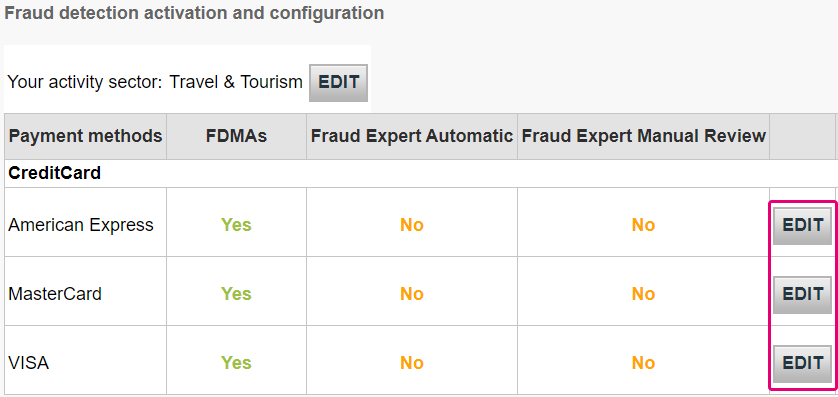Good Info To Picking Credit Card Apps
Wiki Article
How Do I Determine What Happens If My Credit/Debit Card Has Been Identified As Stolen In The Us?
Follow these steps: 1. Contact your credit card issuer.
Contact customer service at the number that is located on the back of the credit card.
Inform the agent of your intention to determine whether or not your credit card was reported lost or stolen.
Verification could require you to provide specific information about yourself, including the number on your credit card and name.
Verify Your Online Account
Log in to your account online for bank accounts or credit cards.
Be on the lookout for alerts or messages about your card's status.
Check the recent transactions and detect suspicious or unauthorized transactions.
Check Your Credit Report-
Obtain a free copy of your credit report from each of the three major credit bureaus (Equifax, Experian, TransUnion) through AnnualCreditReport.com.
Be aware of suspicious credit accounts or inquiries on your credit report which could suggest fraud.
Fraud Alerts, Security Freezes and other measures
Consider placing a credit freeze or a fraud warning on your credit report in the event of fraud or identity theft are suspected.
A fraud alert warns lenders to take further steps to verify your identification prior to extending credit. A security lock restricts access to credit report information, a fraudulent alert is a good method to let them know you are an enigma.
Be alert and report any suspicious activity
Report any suspicious transactions or unauthorized purchases to your credit cards issuer.
Report any suspected cases to the Federal Trade Commission. You can also file a report at the local law enforcement agency.
By contacting the credit card company that issued your card, reviewing your account activity online, monitoring your credit report, and staying vigilant for any signs of unauthorized activity It is possible to take proactive steps to safeguard yourself from fraud on credit cards and address any potential problems with a reported stolen credit card.

What Does A Credit Card Being Listed As Blacklisted Refer To?
The card will be limited to specific transactions and usage until the issue is fixed by the cardholder or the card issuer. The reasons behind a card being placed on blacklists can differ, and could include:
The suspicion of fraud - Blocking cards for security can be triggered by suspicious or unusual transactions that cause fraud detection software to be activated.
Security IssuesIf there are signs of a possible compromise for example, an unauthorised access, a data breach involving the card's details, or unusual spending patterns, the card may be considered a security risk.
Issues with Identity Verification If you're having trouble verifying your cardholder's identification during transactions, particularly in cases where additional verification is required the card may be temporarily suspended.
Card Stolen or Lost If a credit card has been reported stolen or lost the issuer can put a stop to any unauthorised use of the card until a new one is issued.
Suspicious Activity Identifiers- Any actions or behavior connected to the card is suspicious, such as several declined transactions, geographic irregularities, or unusual spending patterns could result in a temporary block.
If a credit card is placed on a list which is a list, it can limit the cardholder’s access to the card or their ability to conduct transactions until the company that issued the credit card confirms its legitimacy or satisfies any concerns about potential fraud or safety risks. Cardholders need to immediately contact their issuer to report the issue and to verify the transactions and to resolve any security issues.

How Do Cybersecurity Experts Monitor Cyber Threats And Detect Stolen Credit Card Information?
Cybersecurity experts monitor and identify threats such as compromised credit card numbers with a variety of methods and tools. The most common techniques and techniques include Threat Intelligence Gathering-
It is important to collect information from different sources, such as threat intelligence feeds (such as forums), dark web monitoring and security alerts to keep up-to-date with new security threats and vulnerabilities.
Monitoring of Networks and Intrusion Detection
Monitor network traffic using specialized tools or software. Find out if there are any suspicious behavior that may indicate unauthorised entry or data breaches.
Assessment of vulnerability and Penetration TestingVulnerability Assessments and Penetration Testing
Conducting regular assessments to identify weaknesses in applications, systems, or networks. Penetration testing involves the use of simulated attacks to reveal vulnerabilities and assess the organization's security capabilities.
Security Information and Event Management Systems (SIEMs)
Implementing SIEMs to analyse and aggregate log data (from firewalls or servers, applications, and firewalls) in order to detect or track security incidents, as well as react immediately to security breaches.
Behavioral Analysis
Conducting behavioral analyses to find patterns that are distinctive or different from the normal behavior of users in the network or system, which could signal a security breach.
The threat of Hunting
Through analyzing logs and other data from systems, you are able to identify threats to your company's network.
Endpoint Security Solutions
Use endpoint security (such anti-malware tools such as endpoint detection tools, endpoint detection tools, response tools such as endpoint detection tools, response tools, etc.) to guard the devices as well as your endpoints from malicious actions.
Encryption Data Protection
Use encryption to safeguard sensitive information, like credit card information both in transit and while at rest.
Incident Response & Forensics
Developing and implementing plan for responding to incidents in order to quickly respond to security incidents. Conducting forensics analysis to understand the impact, scope and the root cause of security breaches.
Cybersecurity experts integrate this method with a thorough knowledge of the ever-changing cyber threat, compliance regulations and best practices in order to recognize, reduce and counter cyberattacks such as those that result in compromised credit card data. Cyber-attacks can be mitigated by a combination of continuous monitoring, information on threats and proactive security. View the best savastan0 for site examples.
